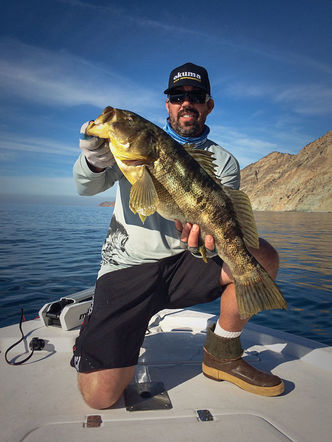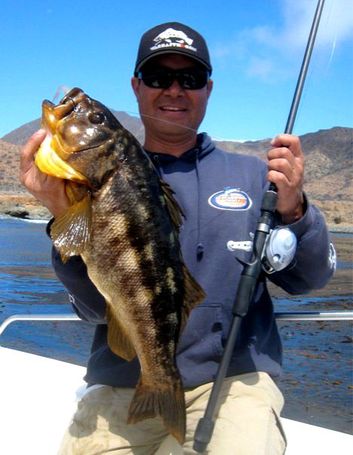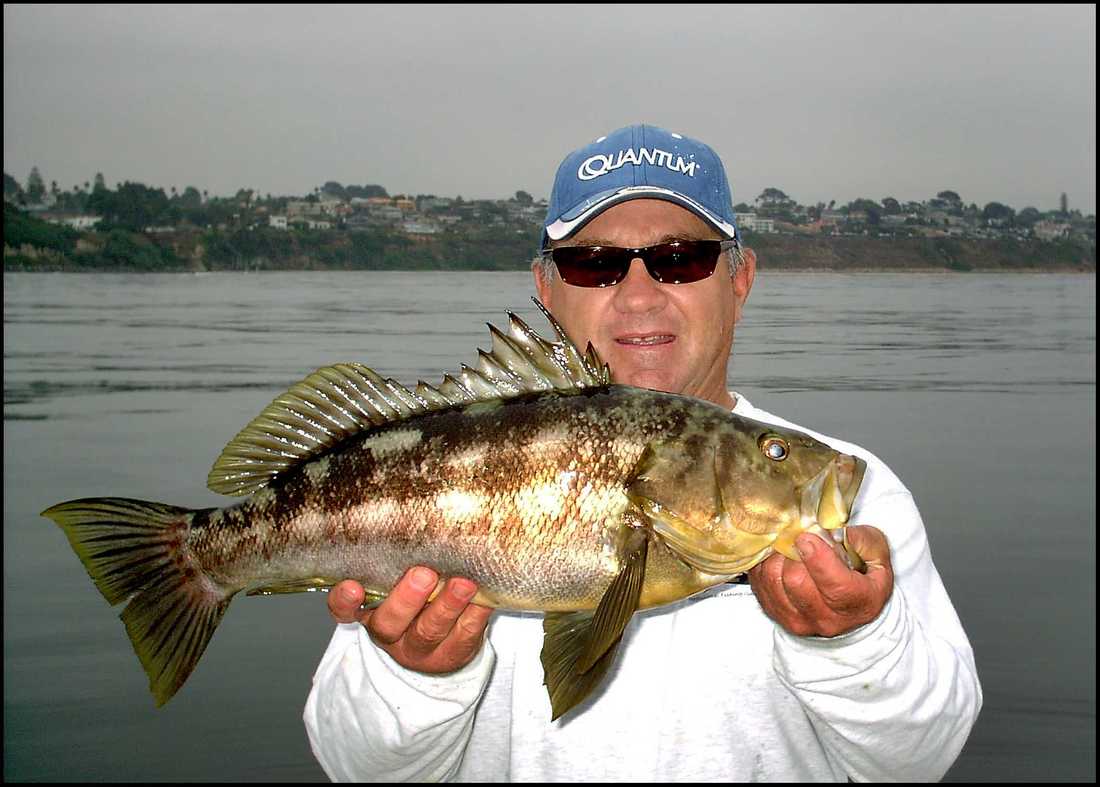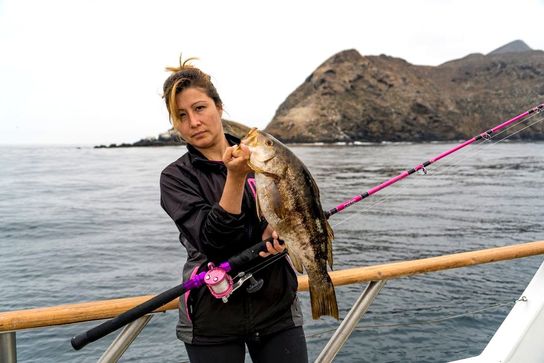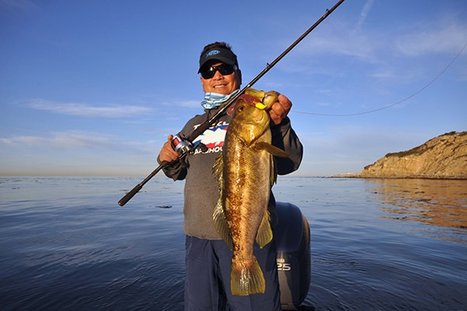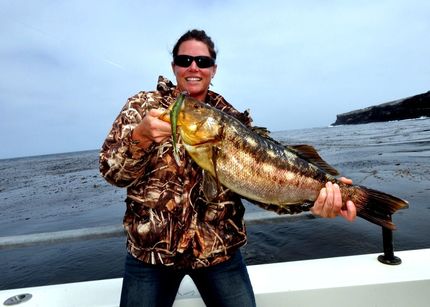Calico Bass
|
The kelp bass is common along the central and southern California coast and northeastern Baja, and ranges from the Columbia River, Washington to Magdalena Bay, Baja California. It is usually found in or near kelp beds, over reefs, around rock jetties and breakwaters or structures in shallow water and to about 150 ft. (46 m). While it is found throughout the water column, larger specimens usually occur in deeper waters.
|
The kelp bass, a member of a large group of seabasses, which inhabit the eastern Pacific, is a robust fish with a typical, well known bass shape. Most anglers in its territory readily recognize the kelp bass as it is one of the most important targets among southern California's light tackle anglers.
|
The color is brown to olive green with pale blotches on the back, becoming lighter below. They are easily distinguished from the sand basses by the fact that the third, fourth and fifth dorsal spines are about the same length, whereas the third dorsal spine of the sand basses is much longer than the fourth and fifth.
|
Because it is considered to be among the best eating fish and a powerful fighter, it is highly sought by sport fishermen. An omnivorous feeder, it will take most of the local live baits as well as a variety of artificial lures. A favorite rig is a metal jig and whole squid. The best fishing is summer to fall although it can be fished year round in some areas.
|
Kelp bass are slow growing, taking 5 to 6 years before reaching the minimum legal size limit of 15 inches, at which time nearly all are capable of spawning. Since they do not migrate and tend to be territorial, they are susceptible to fishing pressure and can be depleted by over fishing in an area.
SERRANIDAE FAMILY; also called calico bass, California kelp bass, rock bass, sand bass, bull bass, kelp salmon, cabrilla.
